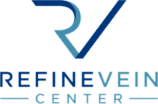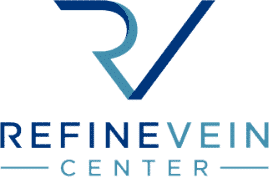Varicose veins are large, twisting veins that appear on the skin’s surface after blood pools inside due to improper circulation. This lack of proper circulation is caused by faulty vein valves that allow blood to leak back into the vein with the force of gravity instead of returning to the heart as it should. This is why varicose veins are typically located in the lower extremities. At Refine Vein Center in Franklin, TN, we evaluate and treat these conditions for patients throughout Franklin, Cool Springs, Brentwood, and greater Williamson County.
The collection of blood that happens in varicose veins often causes pain and tenderness in the legs, which results in discomfort and a lower quality of life for those experiencing it. The pain comes from high pressure in the vein(s) that makes it large and twisted. If one of your varicose veins develops a blood clot, you may experience phlebitis, which is a painful red bump under the skin.
Who Is Affected By Varicose Veins?
Varicose veins are extremely common, and they become more common as you age. Approximately one in three people living in the United States older than the age of 45 years old experience some type of vascular disease. Your risk may be higher depending on your lifestyle, especially if you have a job that requires you to be on your feet for long periods of time. Also, if your parents or other family members have experienced vein issues, your chance of experiencing vein issues rises. Over 80% of people experiencing varicose veins have a history of it in their families. If you are a woman, your chances of vein insufficiency are four times higher than those of men.
Varicose Vein Symptoms
- Dark purple or blue veins close to the surface of the skin.
- Enlarged and twisted veins visible to the eye.
- Painful and/or heavy sensation in the legs.
- Lower leg swelling, cramping, and/or throbbing.
- Heightened pain after long periods of standing/sitting.
- Itchy veins.
- Bleeding from varicose veins.
- Red skin discoloration around the vein.
- Skin irritation, inflammation, hardening, or discoloration on the lower leg.
- Ulcers around ankles.
Diagnosing Varicose Veins
When you come in for a visit, Dr. Reynolds will identify the cause of your vein issues by going over your symptoms, running tests, and doing an ultrasound. When the problem is discovered, Dr. Reynolds will go over treatment options and make a plan that works best for you.
Treating Varicose Veins in Franklin, TN
Fortunately for our patients, varicose veins are easily treated. Treatment options are vast, and most insurance agencies cover medically necessary treatments. Treatments consist of shutting faulty vein valves and rerouting blood through healthy veins. Once treatment is started, patients will likely use compression stockings or bandages to support healing, and we have all the compression stockings you may need right here in the clinic. Whatever you need to get back to a life you truly enjoy, we at Refine Center will do all that we can to make it happen.
Contact our Franklin office at 615.716.VEIN to schedule an appointment today.



